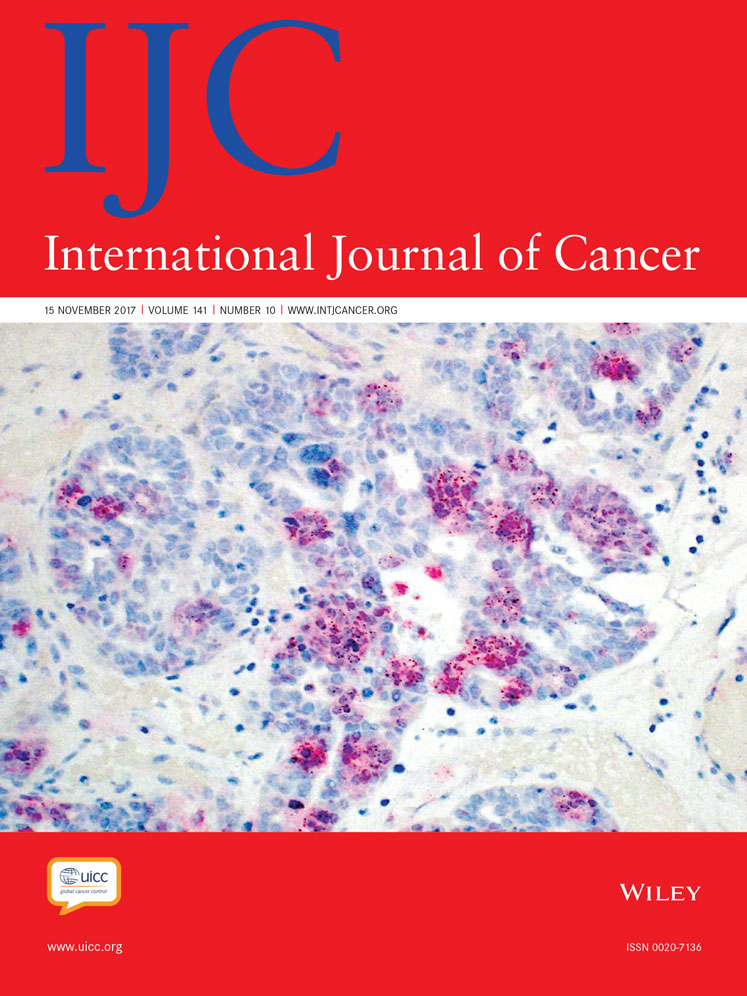Endoscopic screening for synchronous esophageal neoplasia among patients with incident head and neck cancer: Prevalence, risk factors, and outcomes
Abstract
Esophageal squamous-cell neoplasia (ESCN) is a common second primary neoplasia found in patients with head-and-neck squamous-cell carcinoma (HNSCC). This study sought to identify the risk factors for synchronous ESCN and how they influence survival in HNSCC patient. Eight hundred and fifteen incident HNSCC patients were prospectively recruited for endoscopy screening for ESCN using white-light imaging, narrow-band imaging, Lugol chromoendoscopy, and pathological confirmation. Associated lifestyle and clinicopathological data were collected. The interquartile follow-up period cutoffs were 11.3, 20.5 and 34.9 months. 124 patients (15.2%) were diagnosed as having synchronous ESCN (66 low-grade dysplasia, 29 high-grade dysplasia, and 29 esophageal squamous-cell carcinoma). Consumption of alcohol, but not betel nut or cigarette, was significantly associated with the presence of synchronous ESCN (adjusted odds ratio [aOR] = 7.1 and 10.9 for former and current drinkers, respectively). There was an interaction between cumulative dose of alcohol consumption and alcohol flushing response on the development of ESCN. High-dose drinkers with flush response were 16.9 times more likely to have esophageal high-grade dysplasia/SCC than non-drinkers. Compared with oral cavity cancer patients, those with hypopharyngeal, laryngeal and oropharyngeal cancer were 6.8, 4.6 and 2.8 times more likely to have esophageal high-grade dysplasia/SCC. HNSCC patients with synchronous ESCN had lower overall survival than those without (p < 0.0001). In conclusion, surveillance of ESCN is strongly recommended for the high-risk subpopulation of HNSCC patients, especially drinkers who have a flush response to alcohol, and those with distant metastasis of index cancer and cancers in hypopharynx, oropharynx and larynx.
Abstract
What's new?
Alcohol consumption is the strongest risk factor for the development of esophageal squamous-cell neoplasia (ESCN) as a second primary tumor in patients with head and neck squamous cell carcinoma (HNSCC). In some individuals, particularly Asians, esophageal cancer risk is further associated with alcohol flush response. Here, among HNSCC patients in Taiwan, high-dose alcohol consumers with flush response were found to be 16.9 times more likely have esophageal high-grade dysplasia/squamous cell carcinoma. Risk of ESCN was also elevated in HNSCC patients with hypopharyngeal, oropharyngeal, oral cavity cancers or laryngeal cancer. Endoscopic surveillance could facilitate ESCN detection in these high-risk HNSCC subpopulations.




